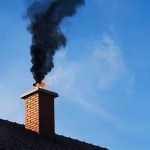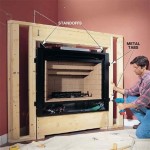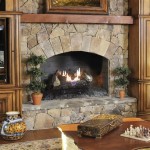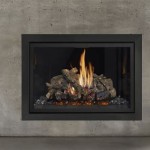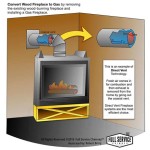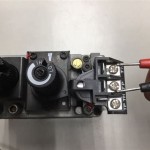Can I Use Gas Fireplace With Wood Logs?
The question of whether wood logs can be burned in a gas fireplace is a common one. Gas fireplaces are designed as self-contained heating appliances offering convenience and efficiency. Integrating wood logs into this system introduces factors that could compromise safety, functionality, and the lifespan of the fireplace.
Understanding the design and operational parameters of a gas fireplace is crucial before considering any modifications, including the addition of wood logs. Gas fireplaces are engineered to burn specific fuel types like natural gas or propane. They feature carefully calibrated air-to-fuel ratios, venting systems, and safety mechanisms tailored to these fuels. The introduction of wood disrupts this carefully balanced system.
Furthermore, gas fireplaces differ significantly from traditional wood-burning fireplaces in terms of construction materials, venting requirements, and safety features. Attempting to burn wood in a gas fireplace can lead to a range of adverse outcomes, from reduced efficiency and increased maintenance to potential hazards and safety risks.
Understanding the Design Differences
The primary difference lies in the intended fuel source. Wood-burning fireplaces are designed to withstand the high temperatures and byproducts of wood combustion. These fireplaces feature a robust firebox constructed from firebrick or heavy-gauge steel, designed to endure extreme heat and physical stress. Their venting systems are typically large chimneys that effectively exhaust smoke, creosote, and other combustion products.
Gas fireplaces, in contrast, are designed to burn gas, which produces less heat and fewer byproducts than wood. Their fireboxes are often made of lighter materials and may not be capable of withstanding the intense heat generated by burning wood. The venting systems are also different. Gas fireplaces have smaller diameter vents, often running horizontally to an exterior wall. These vents are designed to exhaust the relatively clean combustion products of gas, not the smoke and creosote produced by burning wood.
Additionally, gas fireplaces often incorporate features like oxygen depletion sensors (ODS) that automatically shut off the gas supply if oxygen levels in the room drop too low, indicating incomplete combustion. Wood-burning fireplaces rely on a natural draft to remove combustion products and maintain adequate oxygen levels, lacking such automated safety shut-offs.
Another factor is the air-to-fuel ratio. Wood-burning fireplaces use a natural draft and dampers to control airflow, allowing for efficient wood combustion. Gas fireplaces have precisely calibrated air-to-gas mixture controls, optimized for the specific characteristics of natural gas or propane. Burning wood in a gas fireplace will disrupt this balance, leading to inefficient combustion, increased emissions, and potentially dangerous carbon monoxide buildup.
Potential Hazards and Risks
Attempting to burn wood logs in a gas fireplace presents numerous hazards. The first and foremost is the risk of fire. Gas fireplaces are not designed to contain the intense heat and flames produced by burning wood. Sparks and embers could escape the firebox, potentially igniting surrounding materials and causing a house fire. The excessive heat could also damage the fireplace itself, leading to costly repairs or replacement.
Another significant risk is carbon monoxide poisoning. Carbon monoxide (CO) is a colorless, odorless, and highly toxic gas produced by incomplete combustion. Wood-burning produces significantly more CO than gas combustion. If the gas fireplace's venting system is not adequate to handle the volume of smoke and combustion byproducts from burning wood, CO can build up inside the home, posing a severe health hazard.
Creosote buildup is another concern. Creosote is a flammable substance that accumulates in chimneys and venting systems as a byproduct of wood combustion. Gas fireplaces are not designed to handle creosote. Burning wood in a gas fireplace will cause creosote to accumulate in the venting system, increasing the risk of a chimney fire. Furthermore, cleaning creosote from the smaller vents of a gas fireplace can be difficult and expensive.
Damage to the gas fireplace components is highly probable. The intense heat from wood combustion can warp or melt metal parts of the firebox, damage the gas burner, and crack the ceramic logs or decorative features. Such damage can render the gas fireplace inoperable and require extensive repairs or replacement of the entire unit. The gas valves and regulators are not designed to withstand the heat produced by wood combustion, and their malfunction can lead to gas leaks and potential explosions.
Finally, burning wood in a gas fireplace can void the manufacturer's warranty. Gas fireplaces are tested and certified for use with specific fuels. Using unauthorized fuels like wood will invalidate the warranty, leaving the homeowner responsible for any damages or repairs resulting from the misuse of the appliance.
Alternative Options for a Wood-Burning Experience
Homeowners who desire the ambiance and warmth of a wood-burning fire have alternatives that are safe and appropriate. These options include traditional wood-burning fireplaces, wood-burning stoves, and EPA-certified wood-burning inserts for existing fireplaces.
Traditional wood-burning fireplaces must be properly installed and maintained. Regular chimney inspections and cleanings are essential to prevent creosote buildup and chimney fires. These fireplaces require a reliable source of seasoned wood and adequate ventilation to ensure safe and efficient burning.
Wood-burning stoves offer a more efficient and controlled wood-burning experience. These stoves are designed to burn wood cleanly and efficiently, reducing emissions and maximizing heat output. They feature airtight construction and precise airflow controls, allowing for optimal combustion and minimal creosote production. Installation must comply with local building codes and manufacturer specifications. Proper venting is essential for safe operation.
EPA-certified wood-burning inserts are an excellent option for upgrading existing wood-burning fireplaces. These inserts are designed to fit inside the existing fireplace opening and offer improved efficiency and reduced emissions compared to open fireplaces. They also feature airtight construction and controlled airflow, resulting in cleaner burning and less creosote buildup. Professional installation is crucial to ensure a proper seal and safe venting.
For those who prefer the convenience of a gas fireplace but miss the look of real flames, there are gas log sets specifically designed for use in gas fireplaces. These logs are made of ceramic and are engineered to withstand the heat generated by gas flames. They provide a realistic flame appearance without the hazards and mess associated with burning wood.
Ultimately, the decision of whether to burn wood logs in a gas fireplace should be based on safety, functionality, and adherence to manufacturer's recommendations. Gas fireplaces are designed to burn gas, and using them for any other purpose can be dangerous and damaging. Exploring alternative options for a wood-burning experience is the safest and most responsible approach.
It is also important to consult with a qualified HVAC technician or fireplace specialist before making any changes to a gas fireplace. They can assess the specific model and installation and provide expert advice on the best course of action. Professional guidance can help ensure that the fireplace operates safely and efficiently and that any modifications are performed correctly.
Furthermore, local building codes might have specific regulations regarding the use of fireplaces, especially concerning wood-burning appliances. Checking with the local authorities can prevent potential code violations and ensure compliance with safety standards. These regulations often dictate the types of fireplaces allowed, the venting requirements, and the permissible fuels.
In conclusion, while the desire for the aesthetic and sensory experience of a wood-burning fire is understandable, attempting to achieve this by burning wood in a gas fireplace is not advisable. The risks outweigh any perceived benefits. Choosing a suitable alternative, such as a wood-burning stove or an EPA-certified insert, or simply enjoying the intended operation of a gas fireplace, will save money, eliminate hazards, and allow the fireplace to function as it was engineered.

Wood Fireplaces Gas Conversion That Counts

Can I Install Gas Logs In My Existing Fireplace Thomas Bros Propane

Can I Put Gas Logs In My Fireplace Vertical Chimney Care

The Top 3 Reasons To Choose A Gas Insert Over Log Set Hearthside Hearth Blog

The Ultimate Guide To Gas Logs Benefits Of This Hassle Free Fireplace Solution Outdoor Elegance Patio Design Center

How Often Should You Replace The Logs In A Gas Fireplace Flame Company

Choosing Gas Logs For Your Fireplace Rand Wade Oil

Gas Logs Vs Wood Burning Outdoor Fireplaces Green Okie

5 Tips For Choosing The Right Gas Logs Your Home Flame Company

Pleasant Hearth Wildwood 24 In Vent Free Dual Fuel Gas Fireplace Logs Vfl2 Ww24dt The Home Depot

